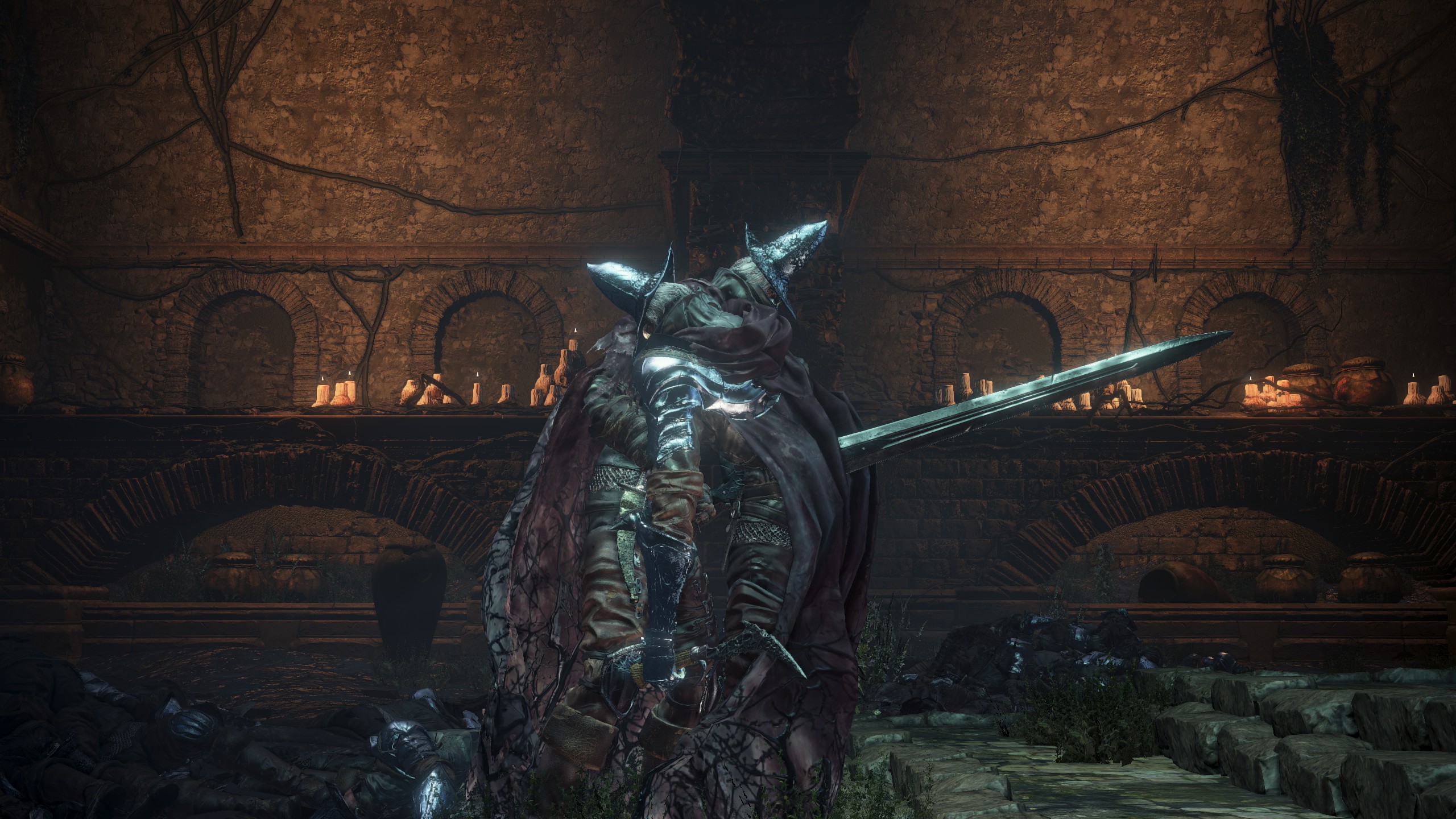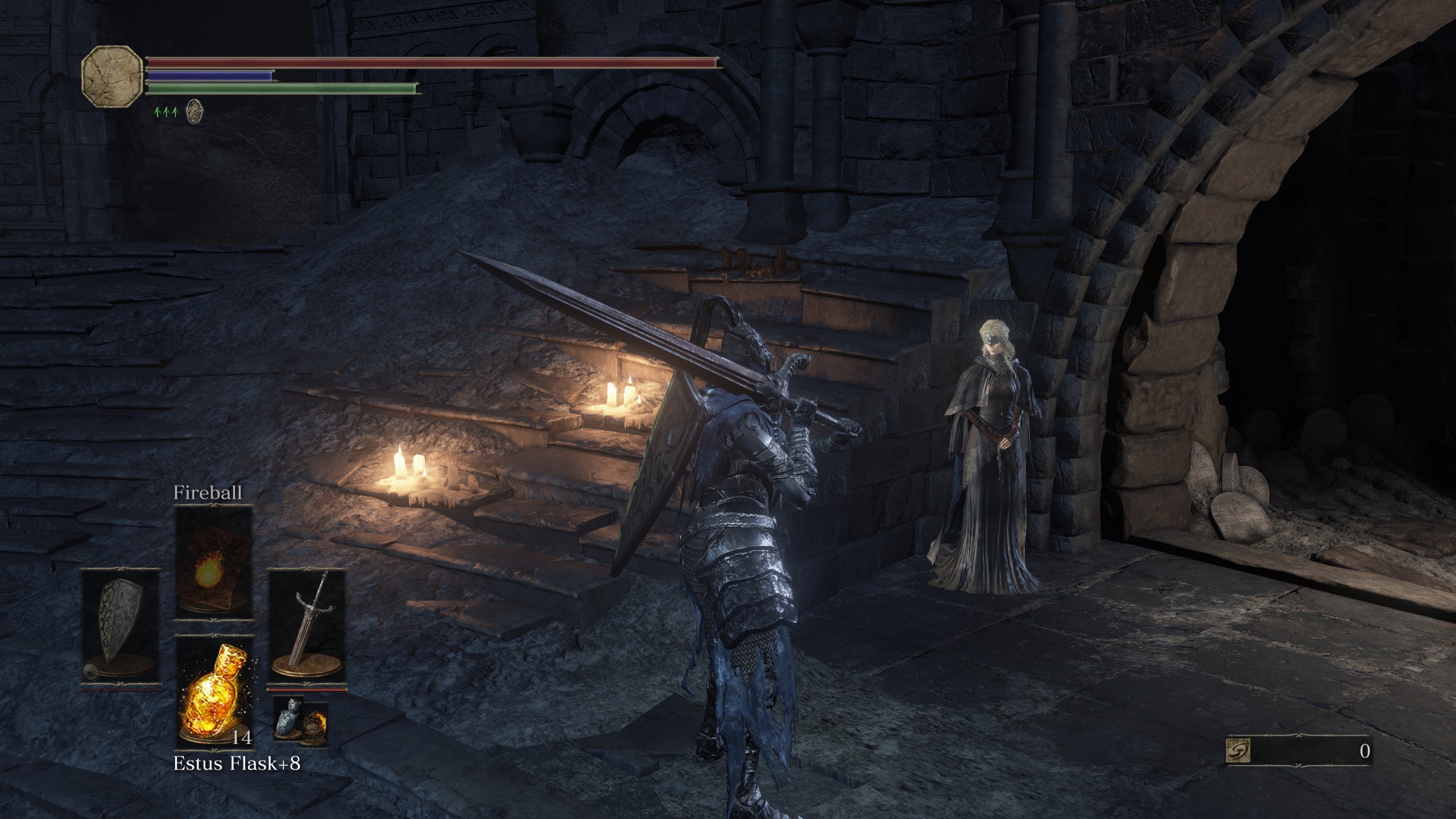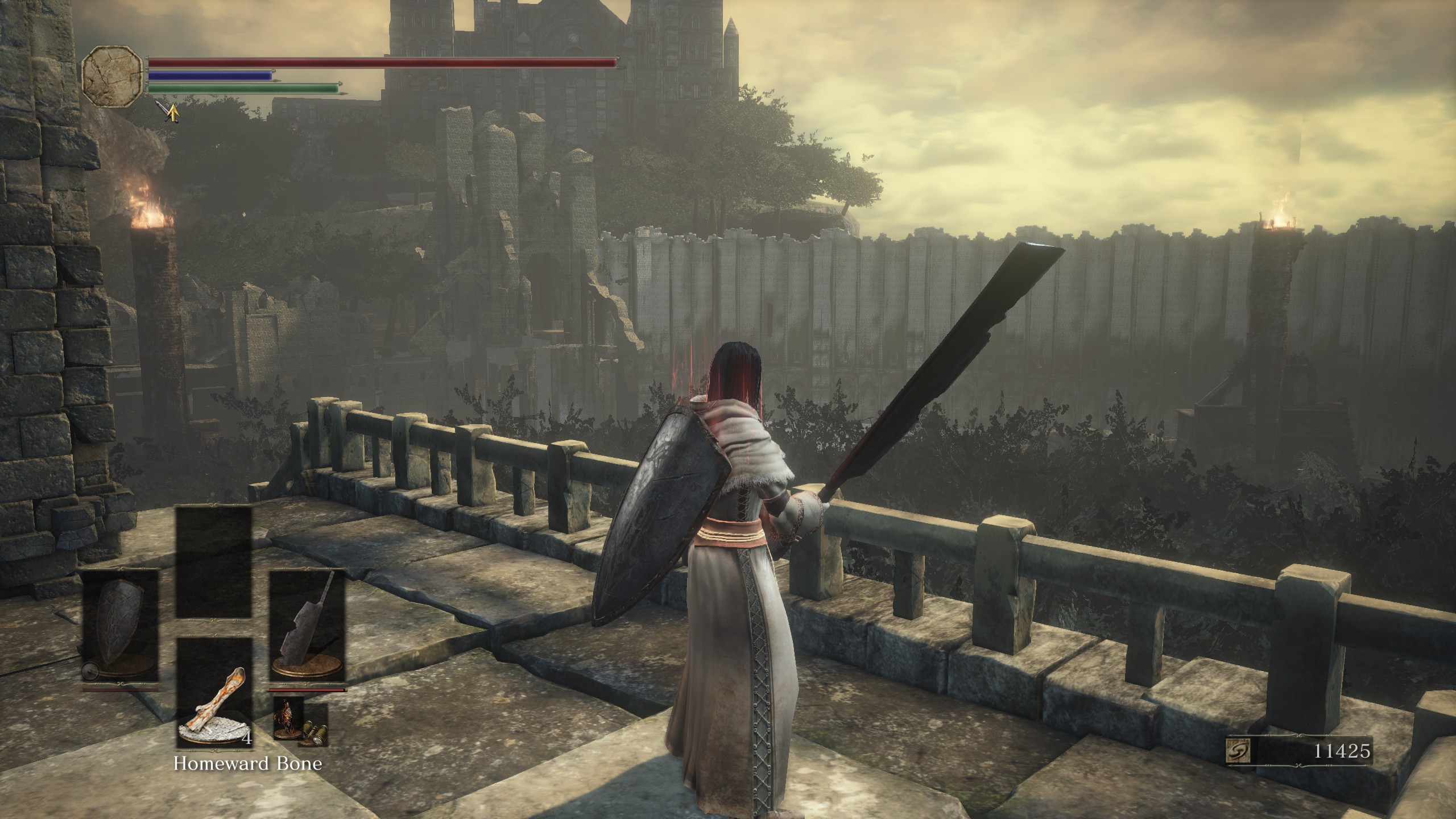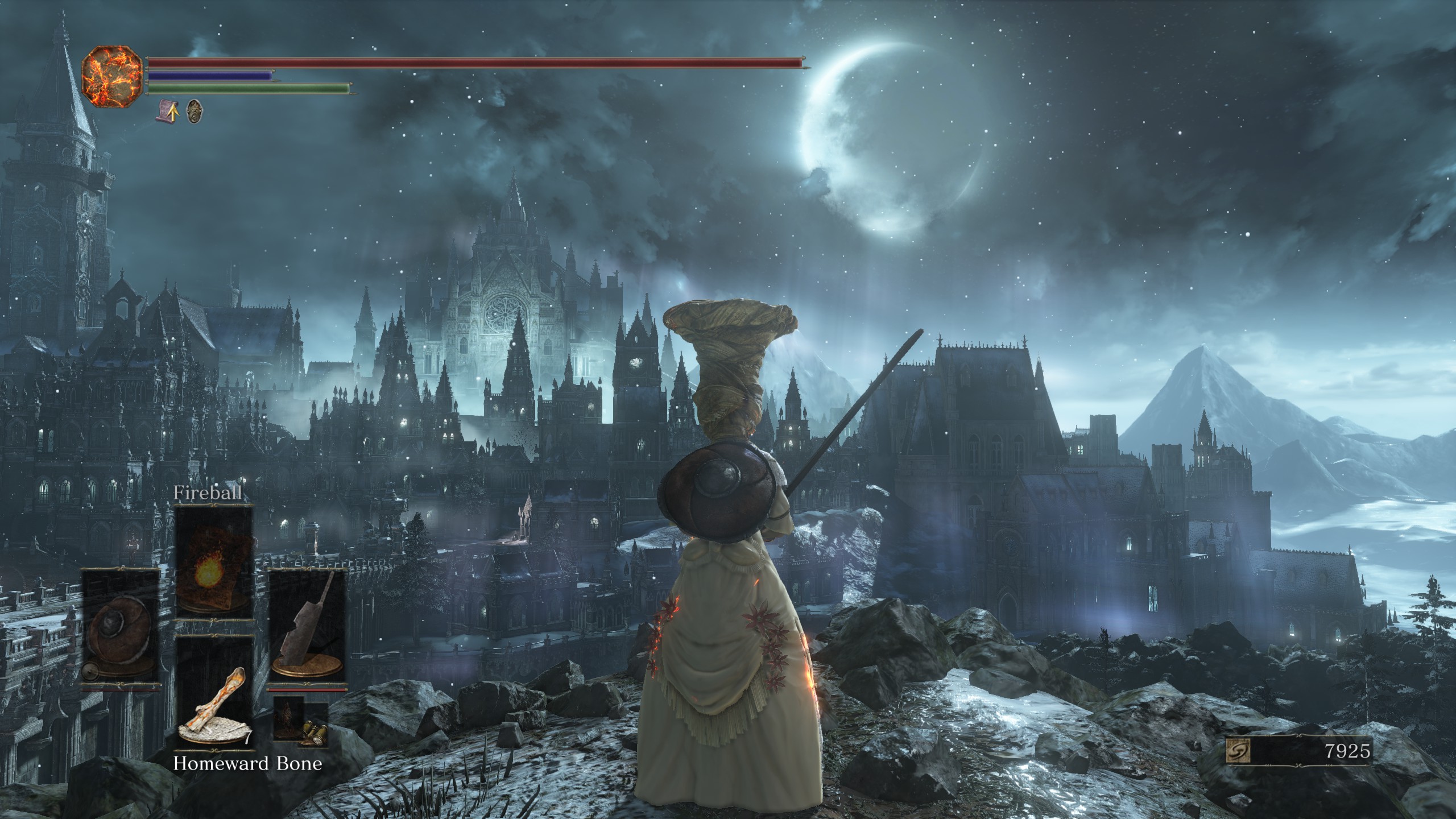Review: Dark Souls III
Warning, the following review contains story spoilers.
Written by Ben Vollmer
When Hidetaka Miyazaki first designed the world of Dark Souls, there was no intent on developing a sequel, or even two. That much became readily apparent when Dark Souls II, a game Miyazaki had very little to do with, released to a crowd of mixed reviews. It didn’t seem to have a place in the universe, outside of what could only be described as fluff history (good fluff, but none the less) – a chunk of Dark Souls universe plopped in the aftermath of Gwyn’s death in the original title.
Dark Souls III is FROM Software’s letter of forgiveness. The last of the trilogy feels exactly how fans expected a sequel to, flush with character references, item lore that stems directly from the original and gameplay and level design that go toe-to-toe with Dark Souls. It’s a furiously paced experience, but one that was meant to be cherished along the way.

Dark Souls III‘s mechanics remain mostly true to the series. What little it deviates, it draws from the fan favorite Bloodborne. As such, the combat loses its weighted and sometimes strategic feel in place of more reactionary dodges and strikes. Shields make a comeback in the game, but skilled players will likely find themselves without one in the later parts of the game. Instead, rolling beneath your enemy’s blows becomes a vital skill to master. Without it, your brutally quick foes will land a series of shots that could end you in one fell swoop.
Much like it’s predecessor, Dark Souls III relies a lot on weapon variety. It’s a shame, then, that the game hardly recognizes some of these weapons as viable. Boss weapons (which can be crafted through offering “souls” to an exiled lord) are rarely helpful, which is hard to stomach given how cool they look. Much like being able to rock the gear of the fallen bosses, being able to wield their weapon is symbolic of your victory. Unfortunately, if you want to succeed, many of these weapons fall beneath even the lowest of standards.
Similarly, mages don’t feel quite as powerful. It isn’t until subsequent playthroughs, when you can wield strong weapons and use magic, that it even feels helpful. Once your stats do begin to round out, magic hits its stride. Still, you’re often left vulnerable and without a true sense of power. Given how precious each additional level up point is (there are fewer opportunities than either Dark Souls or Dark Souls II), it can be a tough pill to swallow — especially if you’re new to the series.
Speaking of difficulty, Dark Souls III might be the easiest the franchise has had to offer. This could be a combination of things, including the fact that nearly anybody who will play the game has played a Dark Souls or spin-off up to this point. Perhaps even more relevant is the fact that there aren’t any mechanics that are specifically designed to brutalize you. With the exception of a single level, there are no “mandatory status effects” or a health bar that dwindles every time you die. The hitboxes are best the series has ever seen (for reference, watch this GIF) and enemies aren’t quite as relentless.

This doesn’t make some of the fights any less daunting. Most of them are multi-phase and exactly zero of them feel similar to the last. It’s an interesting experiment, as it was clear that Miyazaki wanted to steer clear of one of Bloodborne’s few flaws in a lack of boss variety. Some bosses are gigantic in size while others blast you with speed and fluidity. The hardest bosses? Well, they’re both. With the exception of a few gimmick fights – which, to their credit, work tremendously well as both eye candy and talking points – Dark Souls III does its best to emulate the best bosses in its franchise history. When you reach the game’s final boss, your jaw hits the floor and won’t close back up until you are inevitably beaten.
The game has a resounding score, with a few being among the best in the series. Much like Bloodborne before it, Dark Souls III is the second game in the franchise to utilize a full chorus. The effects of which can be seen in full force, here and here. Upon further inspection, the score often references the first title, including the music in the final boss fight. It’s clear that FROM Software dedicated a tremendous amount of effort and funds into making each boss battle feel like something incredibly important was at stake. And, for perhaps the first time in Souls history, it was.

The game’s narrative is still filled with loads of trippy lore. For instance, you meet a familiar NPC who has a death promise with a giant lord. You also find yourself (within moments of the game’s introduction) in the very same Firelink Shrine that served as a hub for the original Souls game. The game gives you so much to think about, even in it’s less direct moments. That being said, there is actually a narrative string that is dangled along the player’s fingertips, this time around.
Your character is quickly announced as “The Unkindled One”, an admittedly unremarkable nickname. This serves a distinct purpose, however. Much like the original Dark Souls, your protagonist’s purpose is is decidedly futile. Your purpose is to ascend the latter of the flame, becoming a Lord of Cinder. Being an Unkindled One, we are meant to be unworthy of this particular goal. And so begins Dark Souls III’s impressive underdog tale – one which feels mighty hopeless until the Lords finally begin to fall. Along the way are NPC’s which happily oblige in berating your attempt. Only a few seem to be even the slightest bit curious of your feats. assuming nothing but failure.
This hopelessness is very slightly mitigated by the fact that you often find yourself surrounded by other Unkindled, both NPC’s and online players alike. Seeing the distinct shadow of an online comrade is often the game’s only attempt at freeing you of loneliness, a fathomable trait to every Souls experience. These fellow NPC’s also provide some of the game’s best story telling. Side-quests manage to avoid feeling like a game of fetch, and instead, bathe you in an entirely new sense of dread. You’re not the only one stuck in this world, and that becomes abundantly clear after you return the evidence of an NPC’s partner’s death or hear the existential complaints of fellow Unkindled. The only hope to be found is in your own accomplishments.

The game also features level design very similar to Bloodborne. In an interesting design choice, Dark Souls III spurns the interwoven overworld of the original in favor of a series of connected dots. Instead of a single giant pizza, we’re given a number of distinct slices. It seems impossible that Dark Souls III, a game that uses space incredibly well, would have managed such distinct territories had it used a single overworld. It allows for more jaw-dropping views a more varied experience.
A terrific instance of this is in the screenshot above, where you are are the highest point of a hidden tower in the middle of the games (perhaps worst) slowest level. As mentioned above, there is only a single instance of forced status-effect, and it lies here, in the Farron Woods. Fortunately, this unfortunate design decision is spared when you realize that it was meant to force you into a new perspective. The level’s objective is simple: find and extinguish three flames across three different towers. From the highest viewpoint, you can easily find and stack down these three flames. From the base level, it’s nearly impossible to see but ten feet in front of you. It’s moments like these that justify even the worst of FROM’s decisions, and have you second guessing every original judgement you’d made up to that point.
 Unsurprisingly, the game is gorgeous. There is a little too much influence from Bloodborne to consider its atmosphere unique, but there’s definitely a variety of scenic levels as the game progresses. This lack of a unique atmosphere is one of the few things that isn’t up to par for Dark Souls III, but it still stands tall in comparison to most other modern RPG’s.
Unsurprisingly, the game is gorgeous. There is a little too much influence from Bloodborne to consider its atmosphere unique, but there’s definitely a variety of scenic levels as the game progresses. This lack of a unique atmosphere is one of the few things that isn’t up to par for Dark Souls III, but it still stands tall in comparison to most other modern RPG’s.
Just like your character, the last game in the Dark Souls trilogy feels like a conclusion to a story that never meant to make it this far. The incredible success that this franchise has had will echo through video game history, allowing developers just like Miyazaki to take chances in level design, difficulty and atmosphere. Dark Souls III is the epitome of the franchise, and the signature title for a franchise that always felt like an underdog.
SCORE: 9.0
